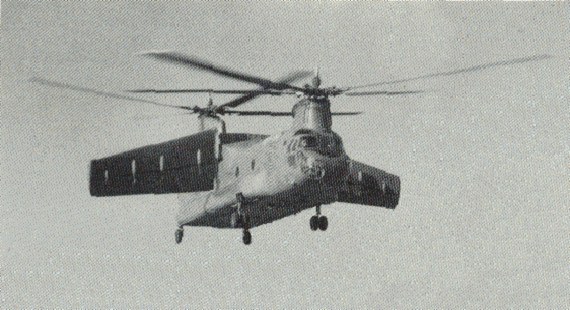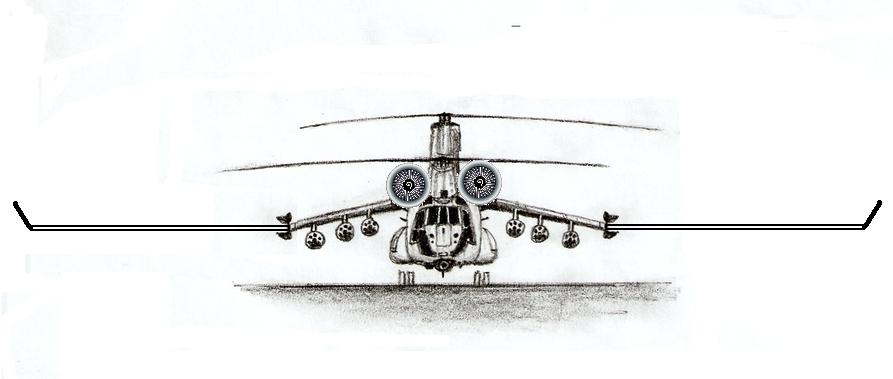In an effort to find the most realistic solution to an odd proposal:
The wing:
It does seem possible with current materials to extend the wing and keep it structurally sound, although the design would likely have to be altered a bit, probably with an external strut in order to have a wing root thin enough to keep the underslung weapons. Additionally, a much longer span would inevitably increase your root chord if you want to keep sufficient wing area, and I have a feeling that would start to block a lot of the area under your rotors, decreasing your vertical thrust and your payload capacity.
Without additional control surfaces (probably on the tail), the wing would also create large pitch instabilities, requiring the rotors to spin at all times to keep positive directional control. They could probably be spun at low power, but this would still limit your forward thrust component since some power would still have to go to the rotors.
The engines:
While AEhere mentioned that the turboshaft engines aren't designed to provide jet thrust, but rather spin the turbines and thus the shaft, a dual-mode design could be feasible that would direct high-energy air proportional to the needs of each propulsion system: to the shaft turbines for vertical flight, and to jet nozzles for forward flight, including potentially into another set of turbines powering a turbofan for better efficiency. This seems to me like the most efficient way to keep the vertical lift system powered at some stages of flight while also providing sufficient forward thrust in others, as well as allowing mixing for partial thrust of each in between stages.
More ideas to come?




